Sea light, pastel facades and filter coffee set a calm pace in this coastal charmer, showing you how to create your Pondicherry Itinerary with style and ease
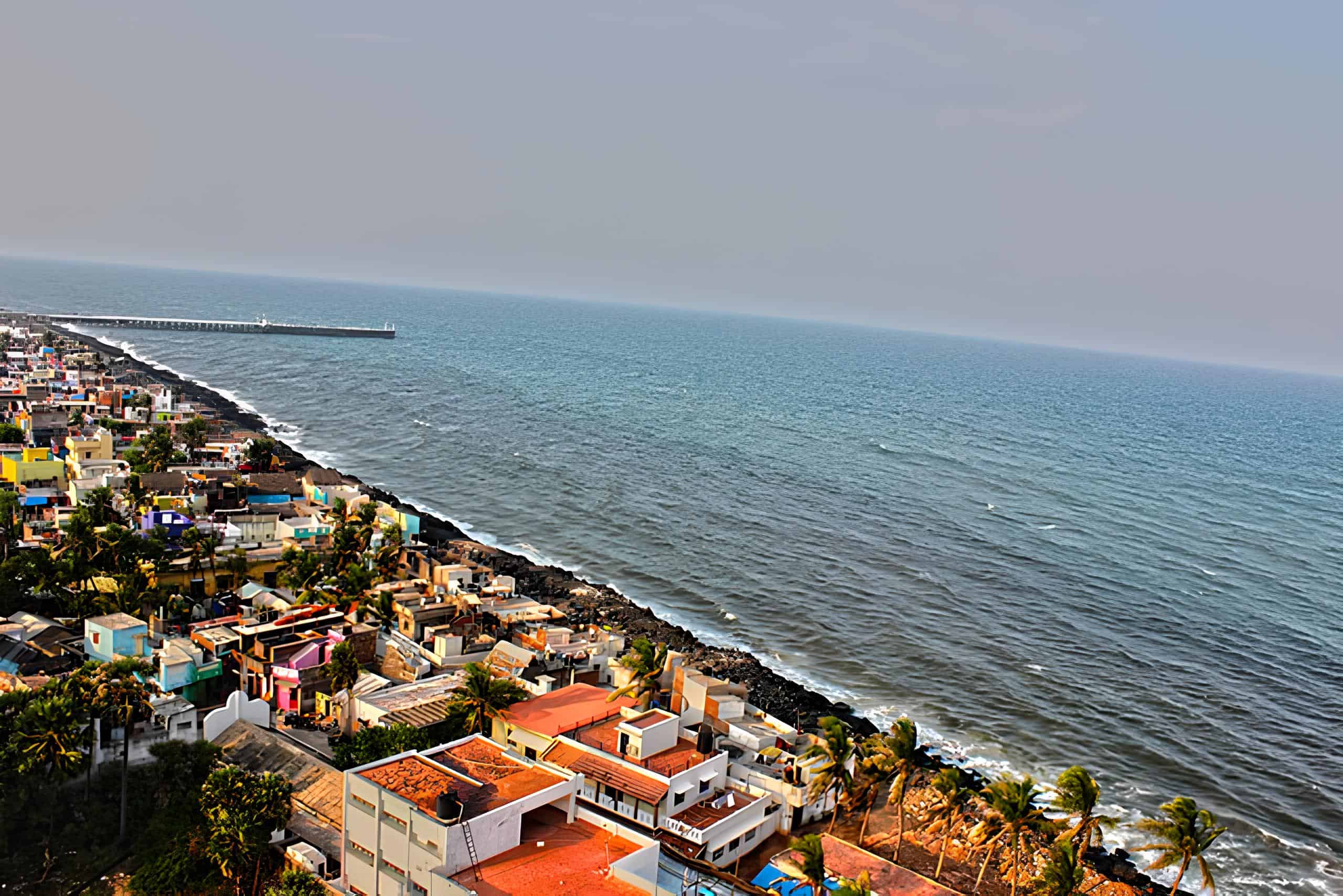
Pondicherry carries a rare balance of calm and colour. Walk a few streets and you feel it in your stride. The sea gathers at a rocky edge along the Promenade. Coconut palms lean over mustard and peach facades. Tamil courtyards breathe cool air behind simple doors. French era nameplates share space with Tamil signs. Cafés open to courtyards scented with coffee and baked butter. Filter coffee steams from small steel tumblers on the same morning that a crisp croissant flakes under your fork. The city is compact, friendly, and easy to read in a day, yet it leaves you wanting a slower week.
This Pondicherry travel itinerary offers a full experience without rushing you. It stays close to the sea and close to the old quarters where most visitors spend their time. It leaves room for quiet at the Sri Aurobindo Ashram and gives you a choice in the afternoon between Auroville and the beach. It ends with a soft evening on the Promenade and an unhurried dinner in a terrace or courtyard. It keeps facts clear and practical, so your day flows without strain.
Orient yourself
Pondicherry is a coastal city on the Coromandel Coast of India, south of Chennai, within the Union Territory of Puducherry. The historic French Quarter, often called White Town, sits along the sea. The Tamil Quarter lies inland with streets of high plinths, tiled roofs, and columned verandahs opening to familial courtyards. Between them is a web of small streets with cafés, boutiques, bookstores, and heritage homes that have been sensitively restored. The seafront stretch is commonly known as Rock Beach or the Promenade. It is more a wave-kissed walkway than a sand beach. Waves break on large boulders set to protect the shore, and a broad pavement welcomes walkers, families, and fitness runners.
A short drive north sits Serenity Beach, where surfers gather and small shacks sell tender coconut and snacks. South of the city, the Chunnambar Boat House at Nonankuppam runs boats along the backwaters to a sandy strip popularly called Paradise Beach when currents and weather permit. Inland, a planned township named Auroville lies to the north of central Pondicherry. The area is known for collective living, handmade crafts, and the Matrimandir that rises like a golden sphere within a green park. Visitors usually stop at the Auroville Visitor Centre for orientation and access to the official viewing point. Entry to the Inner Chamber requires prior procedures and is not suited to a quick day trip.
You can cross much of central Pondicherry on foot. The gridlike plan and short distances make walking a pleasure. Cycles are available for rental, and many hotels offer them for short rides. Auto rickshaws fill the gap for longer hops or for the hot parts of the afternoon. Tamil and English are widely understood in the visitor-facing quarters. French appears on street signs and in the names of homes and churches. Many people in hospitality are comfortable switching between Tamil and English.
Begin by the sea
If you wake early, the Promenade rewards you with a silver blue light and a soft breeze. The sea smells clean at this hour. The Mahatma Gandhi statue stands near the centre of the walkway on a raised plinth held by simple columns. The old lighthouse tower stands nearby as a reminder of maritime history. Joggers make steady loops. Families stroll with children who are surprised by the spray. Vendors set up for the day with small kettles and baskets. A gentle coastal walk resets the body in a way that no alarm can.
A cup of filter coffee or ginger tea from a small stall is ideal after the sea air. In Pondicherry, you feel both habits at once, café culture and street stall comfort. This duality shapes the rest of the day. If you prefer a sit-down breakfast, choose a White Town café as the doors open. Courtyards fill with light filtered through bougainvillaea. Menus often include eggs, toast, pancakes, and crêpes, but they also respect the South Indian palate with idli, vada, dosa, and pongal. If you choose a fuller plate now, keep lunch light. If you prefer a delicate start, a bowl of fruit and yoghurt or a pastry will do.
Trace the French Quarter on foot
White Town is a gentle maze of pastel villas with thick walls and tall doors. Many carry carved lintels and shuttered windows. Street signs appear in French and Tamil. You can plan a simple loop along Rue Romain Rolland, Rue Saint Louis, Rue Dumas, and nearby lanes.
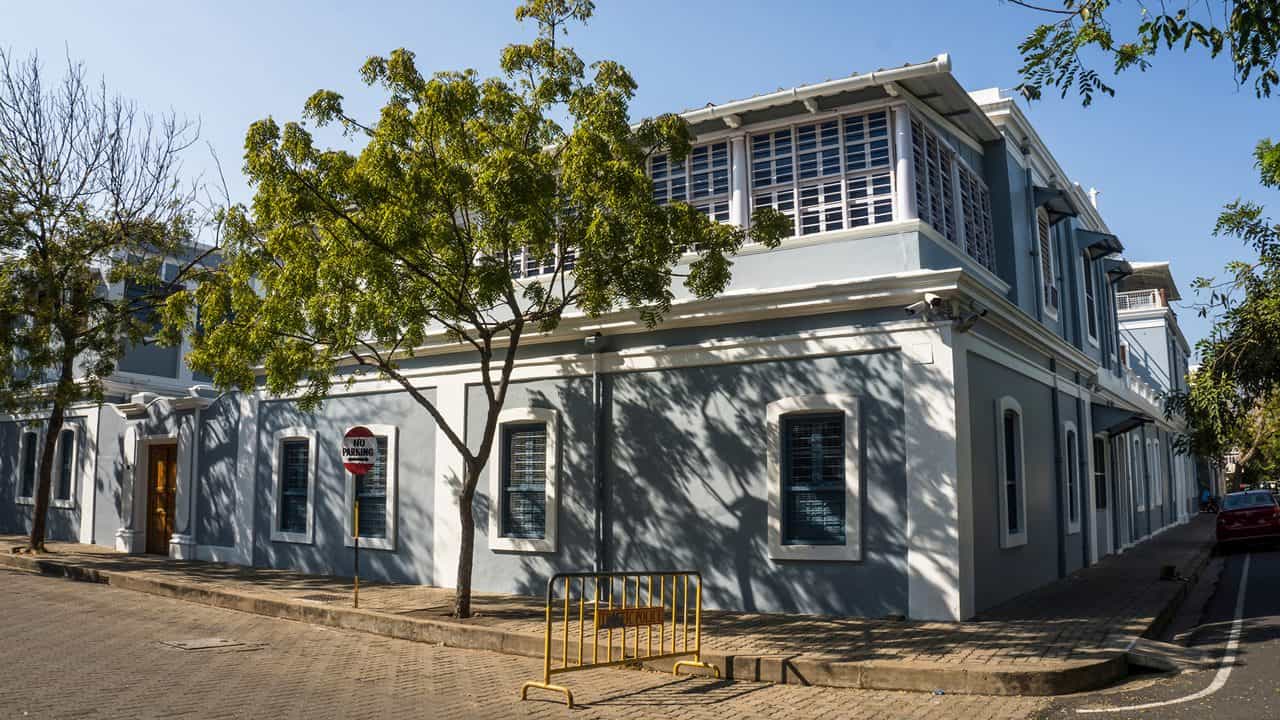
Step into churches for quiet and light. Eglise de Notre Dame des Anges looks over the sea from a short walk inland. The interior is calm and simple. The Immaculate Conception Cathedral sits behind grand steps and a white and yellow frontage. Photography is usually allowed outside. Inside, keep your camera discreet and your voice low. When you step back into the sun, look for small libraries and bookshops where you can pick up local history or works by Sri Aurobindo.
The charm of these streets lies in detail. Watch for wrought iron balconies that hold a small fern. Find a doorway where a wooden door has settled into the colour of sea salt. Touch a sun-warmed wall and feel the lime plaster under your fingers. Pause at a mural and note how the paint has weathered in the salt air. The best photographs arrive when you walk slowly and keep your eyes soft. If you photograph residents, ask before you lift the camera.
A pause at the Sri Aurobindo Ashram
The Sri Aurobindo Ashram sits on Rue de la Marine in the heart of White Town. The entrance is quiet and shaded. Visitors are requested to leave footwear outside and to maintain silence. Photography is not allowed inside. In the courtyard, a flower-decked samadhi draws steady streams of devotees and visitors who stand or sit in quiet reflection.

The sense of calm is striking even when the courtyard is full. This is not a place to narrate your experience in real time. It is a place to close your eyes and let your mind rest for a few minutes. Booklets at the Ashram sales counter offer clear introductions to the lives and work of Sri Aurobindo and the Mother. If you carry that reading out into your day, you will see Pondicherry through a calmer lens.
Cross into the Tamil Quarter and the market
Leave the Ashram and head toward Goubert Market. The air changes at the market entrance. Spice notes rise and fall with the wind. You catch the fresh green smell of banana leaves and coriander. Pyramids of oranges sit beside hillocks of guava. Strings of jasmine and marigold wait for temple offerings. Householders discuss the firmness of a brinjal and the gloss of a tomato. Vendors call out gently but do not force the sale. Brass and steel vessels catch the light. If you are buying fruit to snack on later, it pays to ask for ripe and easy-to-eat options.
From the market, a short walk brings you into the Tamil Quarter. Many houses show a simple street face. Inside, they open to cool courtyards framed by stout columns and terracotta tiles. Doors are often painted in sea greens and earthy blues. The effect is both practical and beautiful. Craftspeople and small ateliers work in these lanes. Hand block-printed textiles, handmade paper, small-batch incense, pottery, and hand-stitched leather goods appear in unassuming shops. Conversations are often personal and informative. If a studio is open, ask if you may watch a process for a few minutes. Respect privacy and keep voices low in residential lanes.
A midday cool down and a light lunch
The light sits high now, and the heat can lean on your shoulders. Rest in a shaded café or a veranda. Tender coconut water is a smart choice at this point in the day, and so are lime sodas and cold-brewed teas. If you prefer caffeine, order a single coffee and pair it with water. Lunch can be as local or as continental as you wish. Seafood is a strength across small eateries and mid-range restaurants.
A plate of prawn masala, fish curry with rice, or a crisp fish fry sits very well after a morning of walking. If you want to stay light, order a South Indian thali with seasonal vegetables and rasam, or a salad and grilled fish. Bread lovers will find comfort in baguettes, sandwiches, and plates of ratatouille or meunière in French-inspired kitchens. Vegetarian diners are well served across the city with idiyappam, avial, sambar, kootu, and curd rice alongside pasta and risotto at continental cafés.
Keep portions reasonable. The afternoon has two strong choices, and both benefit from an alert body. If you prefer design, crafts, and ideas, choose Auroville. If you want salt on your skin and a simple shack at your back, choose the beach.
Option one for the afternoon: Auroville
Auroville lies north of the city across a landscape of red earth and green groves. Begin at the Visitor Centre for orientation. Panels explain the founding idea of Auroville as an experimental township that belongs to humanity as a whole. The Visitor Centre houses boutiques that showcase handwoven textiles, ceramics, natural body care, stationery, and furniture made in and around Auroville. Prices reflect fair wages and careful production. Cafés here serve organic bakes and light meals.
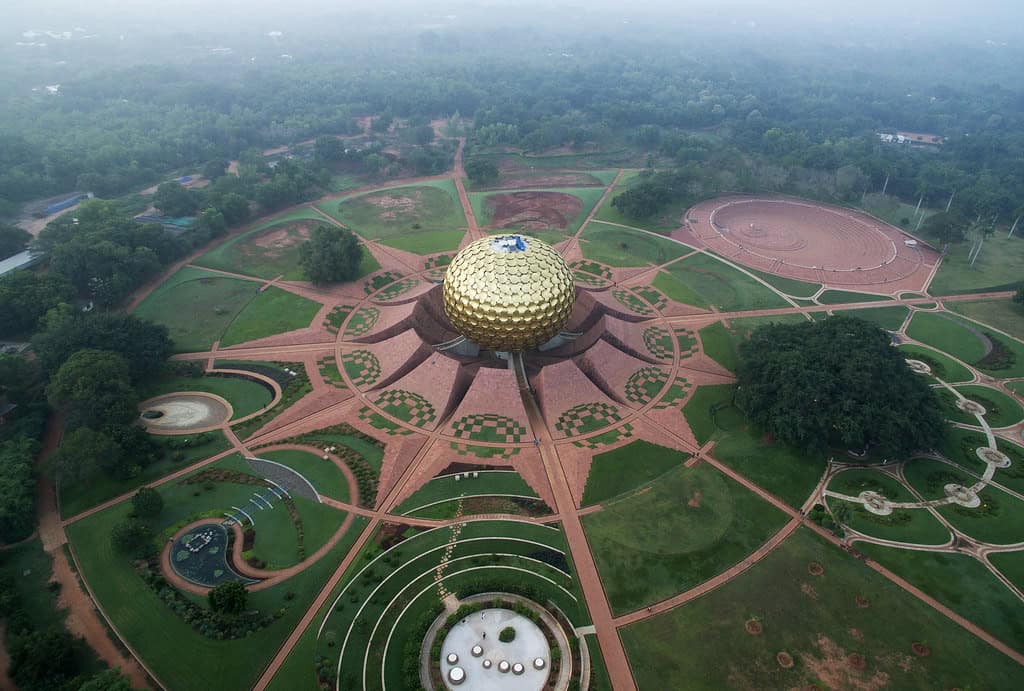
From the Visitor Centre, a path through a shade canopy leads to the official viewing point for the Matrimandir. The golden sphere sits inside a landscaped park named the Peace Area. Visitors stand quietly at the viewpoint to take in the sight. Entry to the Inner Chamber involves prior procedures that do not fit the rhythm of a single-day visit, so a respectful view from the designated point is the right choice.
On the way back, stop again at the boutiques for practical souvenirs that travel well, such as paper journals, incense, hand towels, ceramics, or simple clothing in natural fibres. If you drive or take an auto rickshaw, note where you are dropped and keep the return time loose, since shopping and the walk to the viewpoint can take longer than expected.
Option two for the afternoon: the beach
If you choose the beach, you have two good options. Serenity Beach sits north of the city. It is easy to reach and has a friendly, low-key feel. The bay curves in a way that catches light well for photographers, and surfers often cut across the waves near the breakwater. The water is lively, so pay attention to local advice about currents and safe zones. Simple shacks serve omelettes, fried fish, tea, and lime soda. This is an easy choice if you want salt air without logistics.
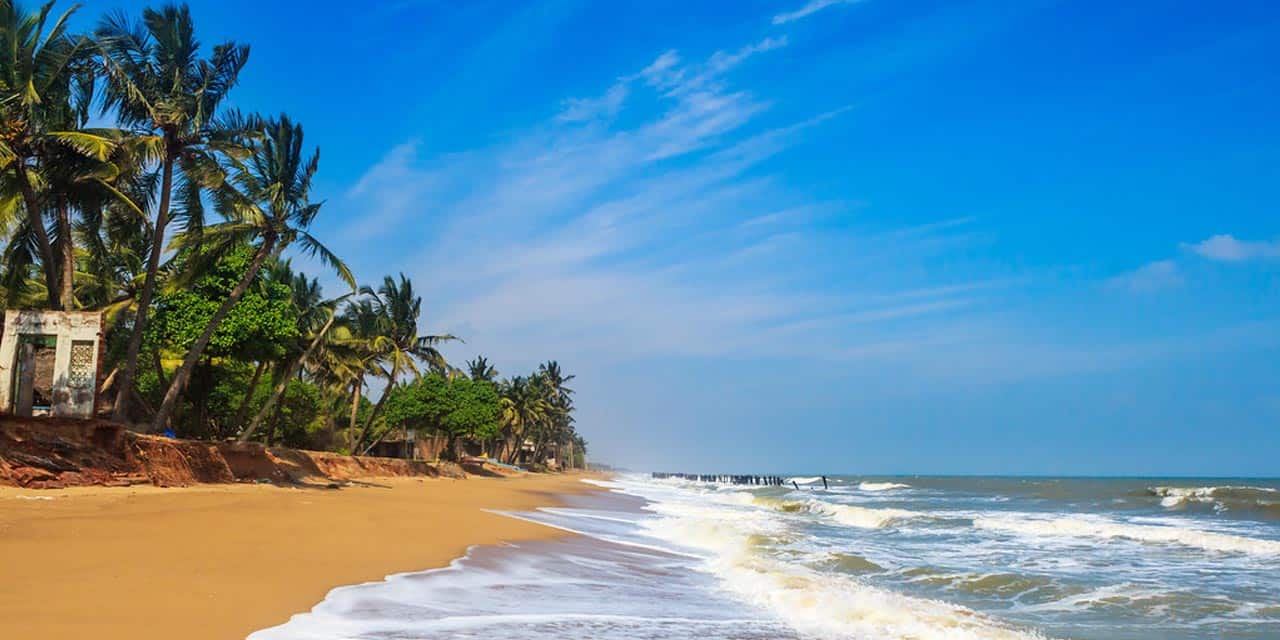
Paradise Beach has a different charm. Boats run from Chunnambar Boat House at Nonankuppam when the weather and river conditions allow. The ride slides through mangroves and backwater bends, and opens to a long sandy strip where the sea rolls in bright and clear. Facilities are basic. Carry water, a small towel, and a bag for your trash. Keep an eye on the last return boat time. Do not wade far into the sea if the surf is strong. Schools and families share this space in the late afternoon. If you prefer quiet, visit on weekdays outside holiday periods. Always ask the operator about the day’s conditions before you buy a ticket.
Return for golden hour and a gentle shop
The light softens again as you return to White Town. This is the moment to enjoy the slower edges of Pondicherry. Boutiques present hand-stitched leather bags, airy linen clothing, pottery in coastal blues and earth tones, paper lamps, incense, and small home goods that suit a tropical apartment.
Francophile visitors drift toward perfumeries and stores that make artisanal chocolate. Bookstores highlight Pondicherry history, translations of Tamil literature, and spiritual texts from the Ashram press. If you shop with intention, you can take home items that keep a link to the city without cluttering your suitcase. A small leather journal, a ceramic mug, a cotton hand towel in cotton, and a few bars of good chocolate will serve you longer than fragile decor.
Stroll the Promenade at dusk
Return to the sea as the sky turns peach and lavender. The Promenade fills with families, students, and travellers. Street performers appear on some evenings. The salt air feels cooler now. This is one of the simplest pleasures in Pondicherry. Walk without a plan. Sit on a bench and people watch. Rest your phone and look at the forms in front of you.
The line of the sea wall, the rhythm of waves, the silhouette of the statue and the lighthouse, children with balloons, and older couples walking with a steady, proud pace. If you want a drink, choose a tender coconut or a simple lime soda from a vendor just behind the walkway. Keep plastic use low and carry your bottle back to your hotel for disposal if you do not find a clean bin.
Dinner in a courtyard or on a terrace
Dinner in Pondicherry can lean either way and still feel right. On one hand, a leafy courtyard with Edison bulbs and a gentle playlist where the menu moves between grilled catch of the day, butter garlic calamari, gnocchi with basil, and a simple crème brûlée.
On the other hand, a South Indian home-style kitchen that serves rice, sambar, poriyal, kootu, a fried fish if you eat seafood, rasam to end, curd, and a sweet. Both experiences are valid, and both are true to the city. If the weather is still, a terrace with a view of the trees and roofs of White Town carries a special charm. Book a table if you are visiting during weekends or holiday weeks. If you are unsure about portion sizes, ask your server. People are generally happy to guide you.
A soft finish
If you like a nightcap, you will find craft cocktails and mocktails in a few stylish settings, and you will also find spiced tea and hot chocolate for a calmer end. Walk a short loop on well-lit streets and turn toward your stay. Pondicherry is relaxed after dinner, but it remains a residential city. Keep voices low outside homes and avoid narrow lanes that feel empty. Most visitors choose to stay within a short walk or rickshaw ride of the Promenade, which makes late evenings easy.
Sleep well and wake easy
Accommodation in Pondicherry ranges across heritage villas in White Town, mid-range boutique hotels with clean design, family-friendly beachside stays, and wallet-friendly guesthouses. Heritage stays place you at the centre of the old quarter and cuts travel time to zero. Design-led hotels offer consistent comfort and dependable air conditioning. Family stays near the beach work for groups who plan to spend a large part of the day by the water. In the humid months, a good ceiling fan and an air conditioner that runs quietly through the night make a noticeable difference to sleep quality. Book early for weekends and winter holidays. Popular stays fill fast.
Practical notes that matter
Pondicherry is about three hours by road from Chennai, depending on traffic and stops. The East Coast Road is a scenic route with sea glimpses and backwater bridges. National Highway 32 is a practical choice for a steady drive. Trains connect to Villupuram and onward to many cities, with short road transfers to Pondicherry town.
A small airport at Puducherry has limited services that change with schedules. Check current routes before you plan to fly. Within the city, you can do most of the itinerary on foot and by auto rickshaw. If you are comfortable on two wheels and aware of Indian traffic habits, scooters are available for hire, but pedestrians and cyclists will find enough to fill the day without a vehicle.
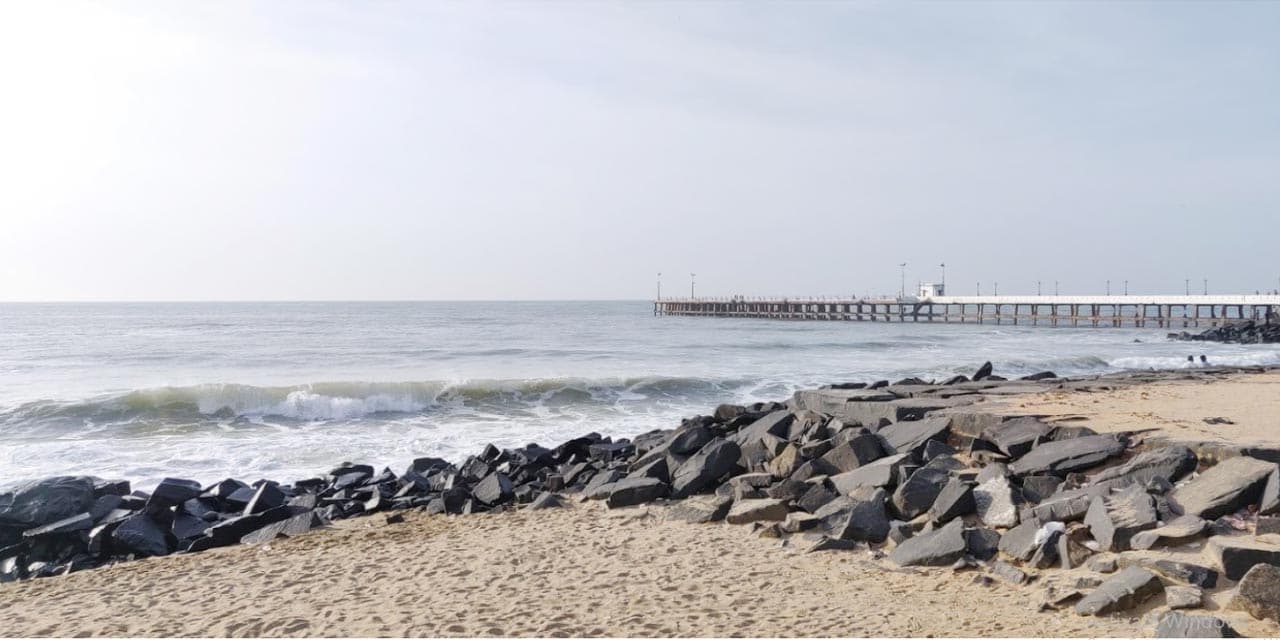
The best weather arrives after the northeast monsoon passes and the air turns clearer, usually late in the year through winter. Summer is hot and humid, so early starts and midday rests matter more. The sea is lively in many seasons along the city’s edge. Swim only at beaches that locals consider safe that day. Even then, stay within shallow zones and keep a steady eye on the surf.
Dress modestly for spiritual spaces and carry a scarf or a shawl if you expect to step into a temple or the Ashram. Silence and respect are expected at the Ashram and at the Matrimandir viewpoint. Photography rules can change in specific interiors. When in doubt, ask a person in charge. In markets and residential lanes, ask before you photograph people and private homes. Carry a reusable water bottle to reduce plastic. Many cafés will refill it for you. Dispose of trash responsibly and avoid leaving anything on the Promenade or at the beach.
Language is easy for visitors. Tamil is the main language in daily life, and English is widely understood in cafés, hotels, and stores. French is visible in names and on signs, and some residents have a working knowledge of it. ATMs exist across the city, though it is wise to carry some cash for small stalls, boats, and rickshaws. Digital payments are common in urban Tamil Nadu, and many vendors accept them, but a backup note or two saves time.
Solo travellers, including women, often find Pondicherry friendly and manageable. Choose central accommodation, stick to well-lit streets at night, and use recognised autos or taxi apps for late transfers. As in any town, trust your instincts, keep valuables close, and avoid poorly lit lanes after hours.
Food to remember Pondicherry by
A day in Pondicherry lets you sample both South Indian comfort and French-inspired plates. Begin with filter coffee or café au lait and a South Indian breakfast of idli, vada, dosa, or a crisp ghee roast if you crave texture. At lunch, a fish curry with steamed rice feels right in a coastal town.
Prawn masala with parotta brings a pleasant weight if you have walked all morning. Vegetarians can choose a balanced thali with sambar, rasam, a couple of dry vegetable sides, curd, and a sweet. If you lean continental, pick a simple plate of grilled fish with lemon and herbs, a ratatouille with bread, or a tart that sits light. In the evening, desserts carry well in the coastal air. A crème brûlée with a clean crack, a citrus tart, a rum-soaked cake that many kitchens treat as a house classic, or gelato on a short stroll back to your hotel.
Chocolate has become a small signature in Pondicherry. Artisanal makers temper bars with careful attention to cocoa notes. Pick a few to carry back. Handmade paper is another thoughtful souvenir. The city has a long craft tradition in paper, which shows in journals, lamps, and stationery that feel good in the hand.
A gentle photo map in words
For a single day, focus on a few dependable frames. The Promenade gives you the sea wall, the Gandhi statue, and the old lighthouse tower. White Town yields pastel corners, shuttered windows, and bougainvillaea clouds. The Tamil Quarter offers columns and courtyards with stepping stones that catch the afternoon light. Auroville, if chosen, gives you the long shaded path and the distant view of the Matrimandir. Serenity Beach offers surfers against the light and a curve of sand that pulls the eye. Paradise Beach gives open water with a bright horizon. If rain arrives, move indoors to bookshops, cafés with courtyard light, and paper stores where diffused light through lampshades makes calm images.
Responsible travel and small courtesies
Cities like Pondicherry remain liveable when visitors travel with care. Use a bottle you can refill. Say no to disposable cutlery when you can sit down and eat. Carry a small cloth bag for purchases and for your beach day. Keep music off speakers on the Promenade and on beaches. Lower your voice at night when you pass residences.
Buy directly from small studios and ask about the craft. You will often leave with a story that enriches the object you bought. If you bargain in markets, keep it gentle and fair. Pay the temple and the Ashram the respect they are due. These are not tourist attractions alone. They are active spiritual spaces that hold daily meaning for many people.
Shape the day to your mood.
This plan is full but flexible. If you love architecture, spend more time in the Tamil Quarter and visit one or two restored mansions that allow entry on a ticket or guided tour. If you travel with children, begin at a beach, break for an early gelato, and keep the Ashram stop short and respectful.
If you are a reader, budget time in the Ashram book sales and at independent bookstores in White Town. If you chase textures and textiles, slow down in the ateliers and give up the second coffee. If you arrive in peak summer, trade one walk for a noon rest and a later start for Auroville or the beach. If you come in winter, stay long on the Promenade in the evening and let the sea take the day to a close.
What this day leaves behind
Travel stories often live in grand facts, but Pondicherry’s charm is built from the daily weave of small senses. The sound of waves slapping the rocks before sunrise. The feel of a cup is warm to the fingers. The sight of bougainvillaea pressing shadows on a yellow wall. The cool of a Tamil courtyard. The scented hush of the Ashram. The swirl of a market lane where flowers and fruits sit in bright piles. The red earth of the Auroville path. The flicker of a fish on a grill. The long line of the Promenade at dusk. The steady fall of breath as you walk back to your room, thinking of the day that fit neatly into your hands.
Pondicherry will welcome you if you come for longer. A single day shows you that this is a city best met in slow steps. It is compact, so nothing is far. It is layered, so everything invites a second look. At the end of 24 hours, you will have seen the sea many times.
You will have held a hot cup, listened to silence, and watched the light bounce from walls that hold history without fuss. You will have eaten simply and well. You will know a few corners by sight and by smell. You will feel the soft rhythm that makes people return. And you will carry with you a calm that stays for a while after you leave, which is the truest mark of a good day in a coastal town.
Read More: Latest



